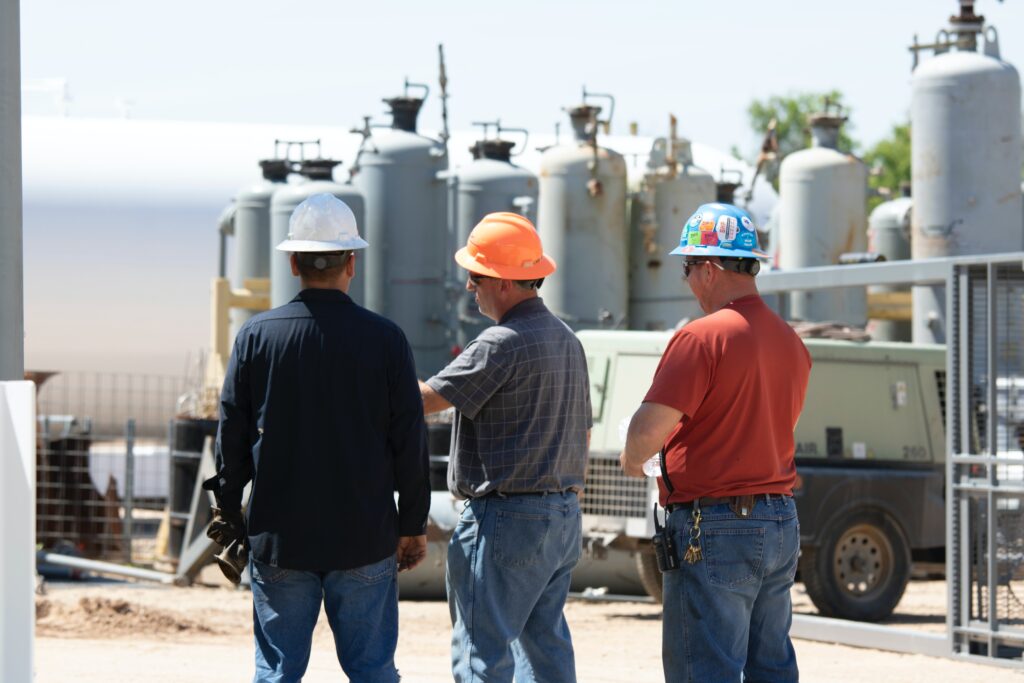Why Does Collaboration in the Construction Industry Matter in 2023?

This article was originally published on August 5, 2022, and updated on February 8, 2023
Research from Mckinsey & Company promises that collaboration in construction is the key to the industry’s future success. Their research shows that general contractors, subcontractors, and suppliers who can create an inclusive working environment rather than a competitive one are completing projects faster and more profitably.
This approach is a radical departure from traditional project management methods.
Historically, construction project management has been a siloed affair, with project managers wrangling multiple stakeholders, each competing for space and time on the job site.
However, it’s painfully clear that this approach is no longer feasible in today’s market.
Far too many projects fall behind schedule and run over budget because of this outdated approach.
Here’s what we cover:
From Conflict to Collaboration in Construction
Owners and general contractors take the risk in most construction projects, while subs and suppliers typically have little say in what happens. This structure can lead to tension and conflict between project team members. That’s because each project participant seeks to maximize profits while minimizing risks.
Collaborative contracts and Integrated Project Delivery models mitigate these tensions by sharing risk and rewards among all parties involved.
Imagine how easy project management would be if everyone:
- Trusted each other enough to communicate openly.
- Shared a vision and common goal for the project.
- Freely shared information and their experience to achieve mutual success.
- Worked together instead of competing with one another.
That’s what inclusiveness and collaboration can offer. Instead of tension and frustration, stakeholders feel free to share their input and listen to the feedback of others.
Collaborative construction management software makes this possible, and it’s easy to implement, but it requires a shift in mindset.

Collaborative Construction Project Management: The Basics
Collaboration in construction project management requires a paradigm shift.
Relationships come first in a collaborative environment. Therefore, building solid relationships is the most critical aspect of a coordinated construction team.
But where to begin?
The team members in a collaborative construction effort are chosen based on several key factors.
Researchers in this recent study identified the following personality traits of successful project team members.
- Good communication skills.
- Generosity and willingness to help.
- An appreciative demeanor.
- Transparency.
The research says collaboration in construction works best when project stakeholders trust one another enough to speak their concerns openly and be vulnerable enough to take feedback and criticism.
Successful project team members understand that the only way to improve is by sharing their vulnerabilities, asking for help, and proactively stepping in to help other stakeholders when needed.
Technical skills matter too. However, the basis for successful construction collaboration is an open, appreciative mindset and an environment free of competitiveness and conflict. But above all, collaboration is only successful when stakeholders are willing to communicate.
Once your construction team is established, the next step in your project management plan is enablement.
What tools are necessary to facilitate efficient collaboration in construction?
Modern construction projects have many moving parts. In addition to separate phases, each contractor uses a unique workflow specific to their trade. And many of these workflows can sometimes conflict with the work of the other crews on site.
Therefore, collaborative team members need tools to maintain strong relationships while working in fast-paced, stressful situations.
One way to achieve this is by using collaborative project management software.
Collaborative project management software keeps construction management teams connected. Cloud-based software keeps stakeholders in constant contact while they work independently across multiple construction projects.
This feature means frustrations never have time to simmer. Stakeholders have real-time access to each other from anywhere—the job site or worldwide.
What to look for in a collaborative construction management platform
Communication through a central hub
Traditional project communications travel by multiple channels. For example, some contractors use the phone, while others text or email. As a result, messages are often hard to find, and crucial information gets lost.
Efficient cloud-based software programs solve this problem. The software built for construction provides a central communication hub that enables real-time project-wide communication with everything all in one place. No wasted effort or delays here.
All project stakeholders can access ongoing conversations relevant to design changes, project scheduling, budgets, resource procurement, and project workflows.
Your software should allow easy access for every team member to initiate and participate in productive communication by mobile device or desktop.
Automated, data-driven, visual workflows
The most productive construction teams follow lean project management principles.
Visual Performance Management (VPM) is a lean project management process that applies very well to construction management. By visually communicating with your construction teams, they can instantly see what needs to be done and where.
Collaborative construction software provides step-by-step visual direction, eliminating guesswork and frustration. The software also captures data communicated from the field for real-time updates, reporting, and process improvement.
Context-aware collaboration allows you to communicate with your team members more effectively, eliminating frustrations and guesswork.
Centralized construction resource management
Resource, equipment, and supply delays are common in the construction industry. They’re a constant source of frustration and tension.
Intuitive software built for collaboration in the construction industry relieves that tension by providing a real-time platform to visualize critical resources. No more wondering where team members are and when the materials and equipment will arrive.
Team members, tools, materials, and equipment are delivered to where they’re needed efficiently and without delays. That means better resource allocation, less idle time, and more productivity.
Real-time information sharing
Real-time collaboration software eliminates the need for time-consuming meetings and email exchanges and is burdened by processes: real-time feedback and more information-sharing speed up productivity.
By working together, contractors can share resources, eliminate redundancies, and resolve disputes quickly and efficiently.
- Shorter project timelines
- Reduced costs and
- Higher quality finished products.
Fewer mistakes, less construction material waste, and less rework translate to reduced construction costs and increased on-time delivery.
Build Better Relationships through Collaboration in your Construction Operation
Collaborative construction software keeps you connected with your project teams, stakeholders, and suppliers so you can focus on building better relationships.
Get a customized demonstration of the most cost-effective, collaborative construction management software today.




